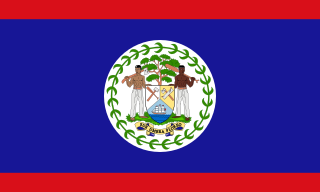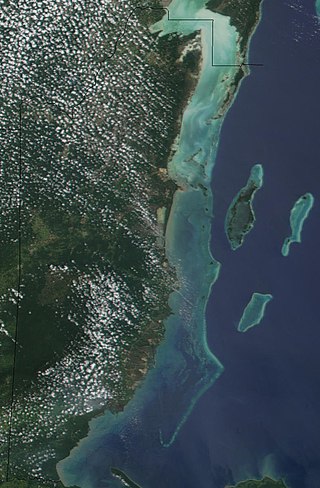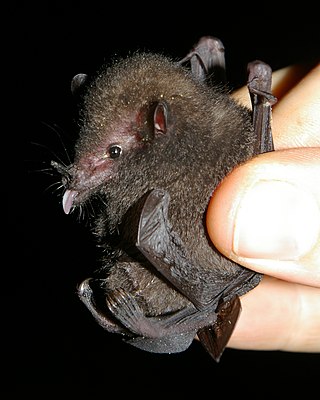
Belize is a country on the north-eastern coast of Central America. It is bordered by Mexico to the north, the Caribbean Sea to the east, and Guatemala to the west and south. It also shares a maritime boundary with Honduras to the southeast. Belize is a member of the Caribbean Community (CARICOM), and is considered part of the Caribbean region and the historical British West Indies.

Central America is a subregion of North America. Its political boundaries are defined as bordering Mexico to the north, Colombia to the southeast, the Caribbean to the east, and the Pacific Ocean to the southwest. Central America is usually defined as consisting of seven countries: Belize, Costa Rica, El Salvador, Guatemala, Honduras, Nicaragua, and Panama. Within Central America is the Mesoamerican biodiversity hotspot, which extends from southern Mexico to southeastern Panama. Due to the presence of several active geologic faults and the Central America Volcanic Arc, there is a high amount of seismic activity in the region, such as volcanic eruptions and earthquakes, which has resulted in death, injury, and property damage.

Belmopan is the capital city of Belize. Its population in 2010 was 16,451. Belmopan is the smallest capital city in the continental Americas and the third-largest settlement in Belize, behind Belize City and San Ignacio. Founded as a planned community in 1970, it is one of the newest national capital cities in the world. Since 2000, Belmopan has been one of two settlements in Belize to hold official city status, along with Belize City.

Belize City is the largest city in Belize. It was once the capital of the former British Honduras. According to the 2022 census, Belize City has a population of 63,999 people. It is at the mouth of the Haulover Creek, which is a distributary of the Belize River. The Belize River empties into the Caribbean Sea eight kilometres from Belize City on the Philip Goldson Highway on the coast of the Caribbean. The city is the country's principal port and its financial and industrial hub. Cruise ships drop anchor outside the port and are tendered by local citizens. The city was almost entirely destroyed in October 1961 when Hurricane Hattie swept ashore. It was the capital of British Honduras until the government was moved to the new capital of Belmopan in 1970.

British Honduras was a Crown colony on the east coast of Central America, south of Mexico, from 1783 to 1964, then a self-governing colony, renamed Belize in June 1973, until September 1981, when it gained full independence as Belize. British Honduras was the last continental possession of the United Kingdom in the Americas.

The Belize national football team represents Belize in international football and is controlled by the Football Federation of Belize, a member of the Central American Football Union of CONCACAF.

The Great Blue Hole is a large marine sinkhole off the coast of Belize. It lies near the center of Lighthouse Reef, a small atoll 70 km (43 mi) from the mainland and Belize City. The hole is circular in shape, 318 m (1,043 ft) across and 124 m (407 ft) deep. It has a surface area of 70,650 square metres (760,500 sq ft). It was formed during several phases of the Quaternary glaciation when sea levels were much lower. Analysis of stalactites found in the Great Blue Hole shows that formation took place 153,000, 66,000, 60,000, and 15,000 years ago. As the ocean began to rise again, the cave was flooded. The Great Blue Hole is a part of the larger Belize Barrier Reef Reserve System, a UNESCO World Heritage Site.

The Belize Barrier Reef is a series of coral reefs straddling the coast of Belize, roughly 300 metres (980 ft) offshore in the north and 40 kilometres (25 mi) in the south within the country limits. The Belize Barrier Reef is a 300-kilometre (190 mi) long section of the 900-kilometre (560 mi) Mesoamerican Barrier Reef System, which is continuous from Cancún on the north-eastern tip of the Yucatán Peninsula through the Riviera Maya and down to Honduras, making it the second largest coral reef system in the world after the Great Barrier Reef in Australia. It is Belize's top tourist destination, popular for scuba diving and snorkeling and attracting almost half of its 260,000 visitors. It is also vital to the country's fishing industry.

Underwood's long-tongued bat is a species of bat in the family Phyllostomidae. It is the only species within the genus Hylonycteris. It is found in Belize, Guatemala, Mexico, Nicaragua, and Panama. Hylonycteris underwoodi feed on nectar, pollen grains, agave and fruits. This choice of food has allowed them to gain the ability of hovering flight, thereby evolving their body mass and size to compensate for the same.

The monarchy of Belize is a system of government in which a hereditary monarch is the sovereign and head of state of Belize. The current Belizean monarch and head of state since 8 September 2022, is King Charles III. As sovereign, he is the personal embodiment of the Belizean Crown. Although the person of the sovereign is shared with 14 other independent countries within the Commonwealth of Nations, each country's monarchy is separate and legally distinct. As a result, the current monarch is officially titled Kingof Belize and, in this capacity, he and other members of the royal family undertake public and private functions as representatives of the Belizean state. However, the King is the only member of the royal family with any constitutional role.
Miss Universe Belize is a national beauty pageant that selects Belize's official representative to Miss Universe—one of the Big Four International beauty pageants.

Relations between Belize and the United States have traditionally been close and cordial. The United States is Belize's principal trading partner and major source of investment funds. It is also home to the largest Belizean community outside Belize, estimated to be 70,000 strong. Because Belize's economic growth and accompanying democratic political stability are important U.S. objectives, Belize benefits from the U.S. Caribbean Basin Initiative. Belize hasn't received a direct visit from an American president, the country's leadership has met with various American presidents during meetings along with the Caribbean Community such as the 1997 summit with Bill Clinton in Barbados.

Arthromastix is a genus of moths of the family Crambidae. It contains only one species, Arthromastix lauralis, which is found in Central America, South America, as well as the Dominican Republic and Cuba.

Argyrogramma verruca is a moth of the family Noctuidae. It is found from Maine to Florida to Texas, Kentucky, Arizona, Kansas, Southern Michigan, Pennsylvania, Ohio, Southern Ontario, the Antilles, Central America to Brazil to Northern Argentina and Paraguay.

Chetone angulosa is a moth of the family Erebidae. It was described by Francis Walker in 1854. It is found in Central America and northern South America, including Venezuela, Guatemala, Belize, Panama and Costa Rica.

Cosmosoma festivum, the festivum wasp moth, is a moth of the family Erebidae. It was described by Francis Walker in 1854. It is found in Mexico, Guatemala, Belize, Costa Rica and Honduras. It has also been recorded in southern Florida and southern Texas.
Hoterodes ausonia is a moth in the family Crambidae. It was described by Pieter Cramer in 1777. It is found from Florida, through Central America to Suriname and Ecuador. It is also found in Cuba and Puerto Rico.

Shipstern Conservation and Management Area is a protected area located in the Corozal District of northeastern Belize.

The COVID-19 pandemic in Belize is part of the ongoing worldwide pandemic of coronavirus disease 2019 caused by severe acute respiratory syndrome coronavirus 2. The virus was confirmed to have reached Belize on 23 March 2020.
















